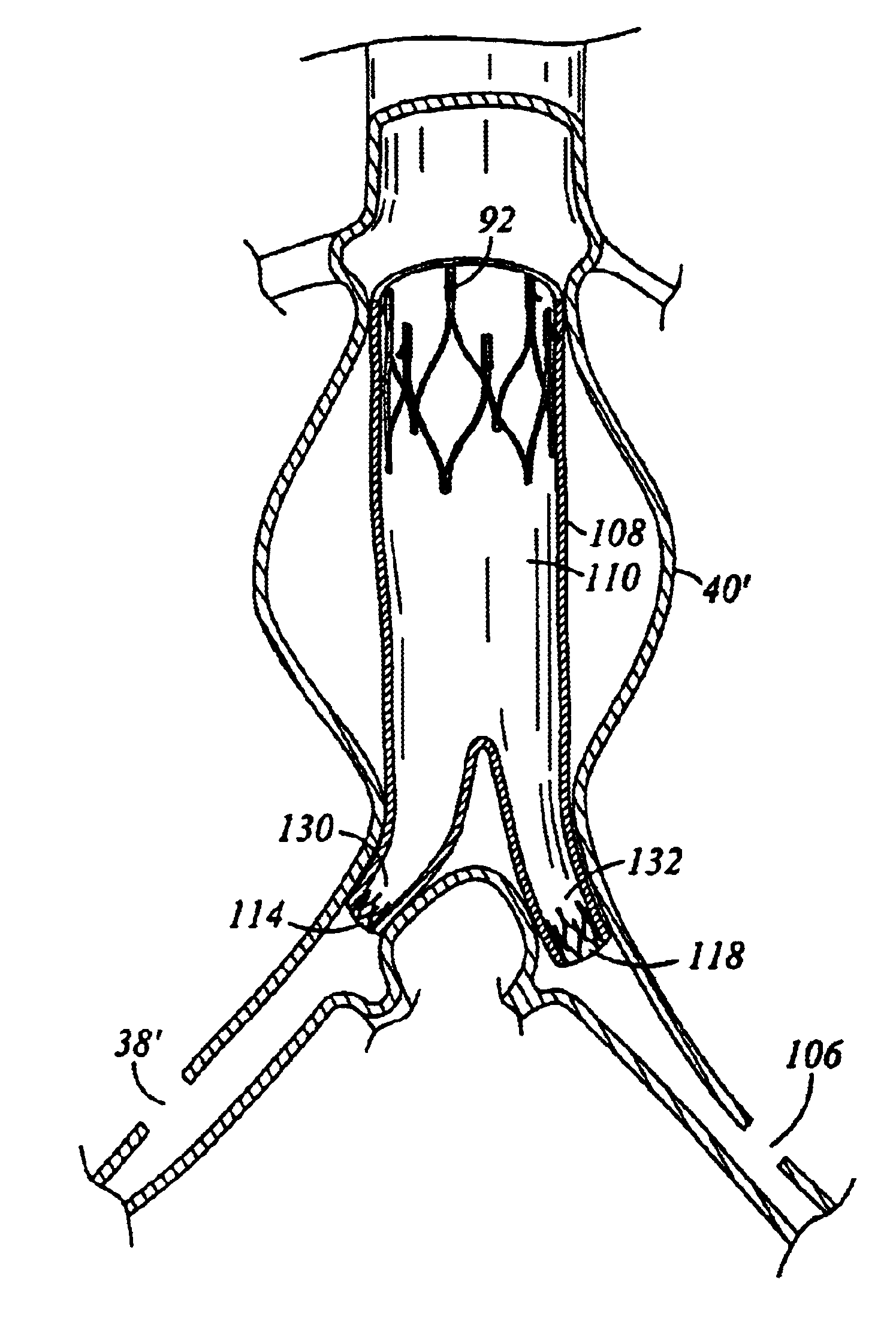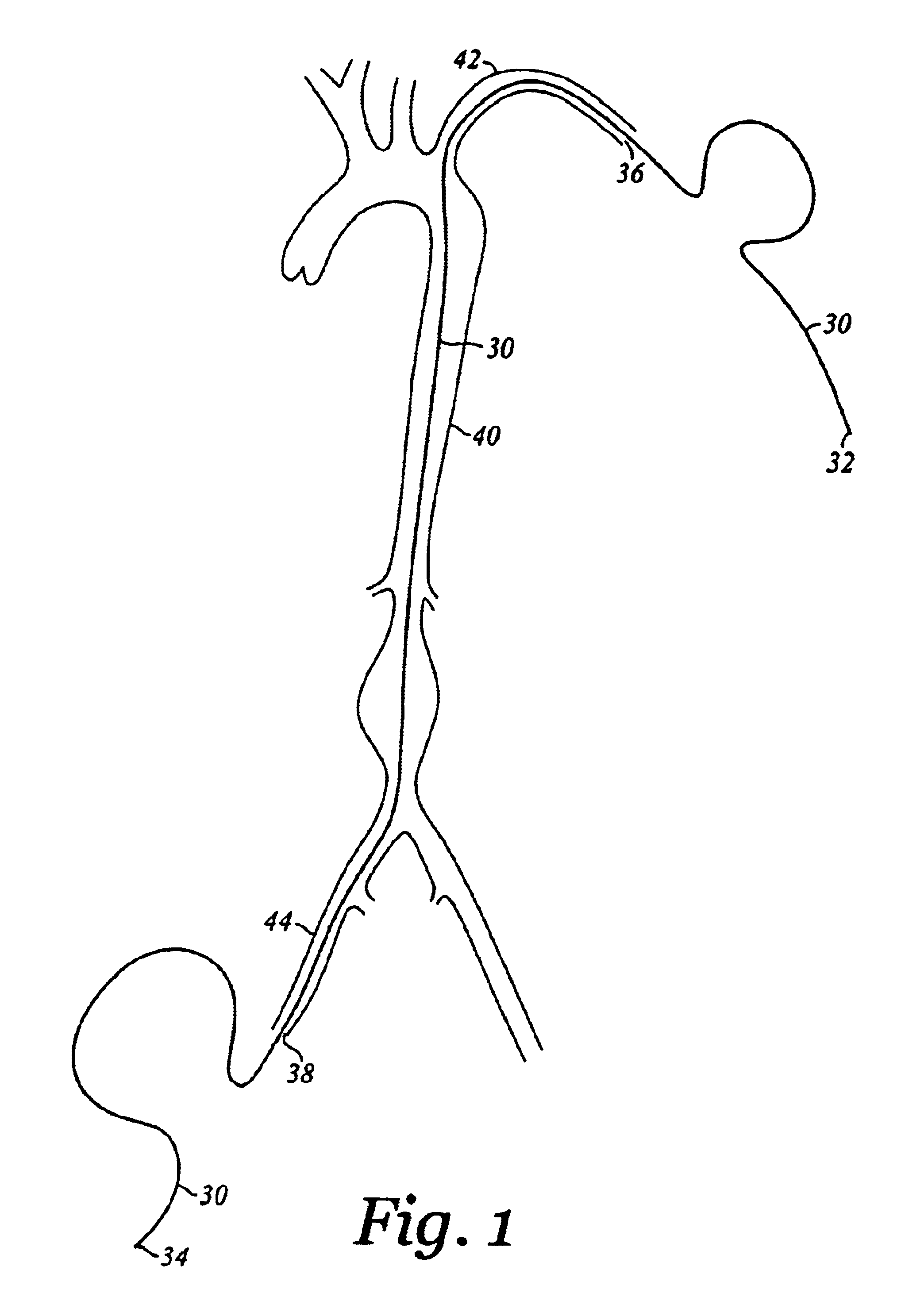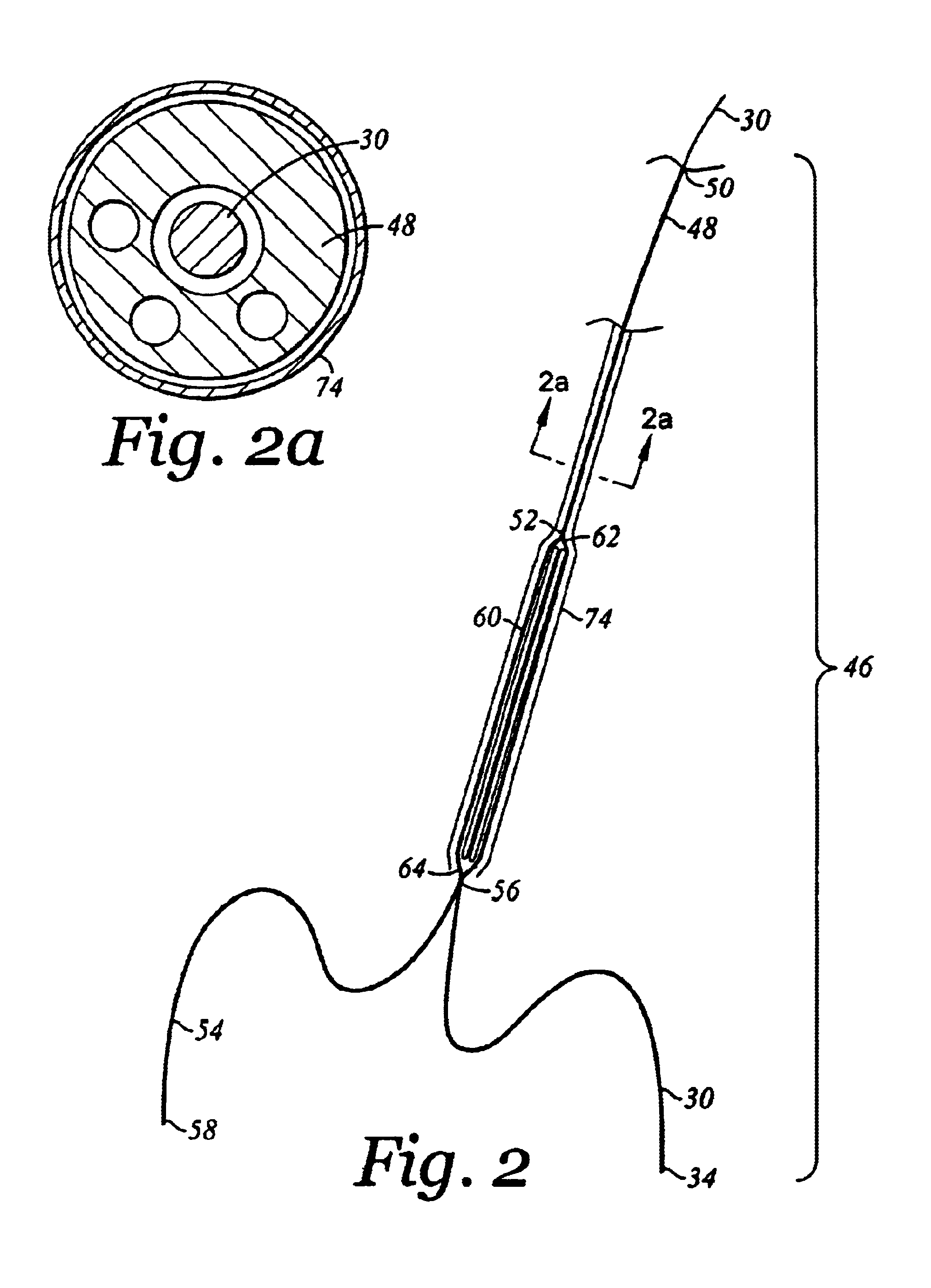Device and method for staged implantation of a graft for vascular repair
a vascular repair and staged graft technology, applied in the field of intraluminal grafts, can solve the problems of increasing the risk of rupture and hemorrhagic death, the most life-threatening of aneurysms, and the risk of direct surgical intervention of this magnitude, and achieve the effect of facilitating the delivery of the gra
- Summary
- Abstract
- Description
- Claims
- Application Information
AI Technical Summary
Benefits of technology
Problems solved by technology
Method used
Image
Examples
Embodiment Construction
The device and method disclosed by the present invention may be used to deliver to a patient's vascular system a flexible tubular graft which may be straight, tapered, or bifurcated. In the preferred embodiment of this invention, the graft may be delivered to the patient's vascular system without performing surgery on the patient to open the vessel prior to insertion of the graft; rather, insertion is achieved percutaneously over a guidewire using the Saldinger technique or with a small diameter introducer sheath. Alternatively, insertion is achieved by applying force to the skin and vessel of the patient with the tapered end of the repair assembly sufficient to gain direct entry into the vessel. This method of insertion is referred to herein as the “direct percutaneous” method of insertion.
The terms “superior” and “inferior” shall be used herein to have the same meaning as the terms “up” and “down” respectively and shall signify ends or directions which are towards and away from th...
PUM
 Login to View More
Login to View More Abstract
Description
Claims
Application Information
 Login to View More
Login to View More - R&D
- Intellectual Property
- Life Sciences
- Materials
- Tech Scout
- Unparalleled Data Quality
- Higher Quality Content
- 60% Fewer Hallucinations
Browse by: Latest US Patents, China's latest patents, Technical Efficacy Thesaurus, Application Domain, Technology Topic, Popular Technical Reports.
© 2025 PatSnap. All rights reserved.Legal|Privacy policy|Modern Slavery Act Transparency Statement|Sitemap|About US| Contact US: help@patsnap.com



